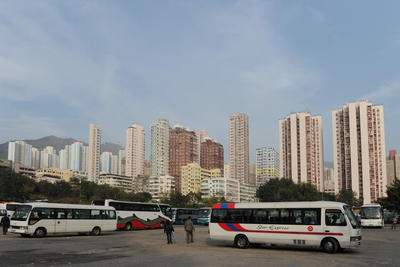Services trade is also the most rapidly growing component of international trade, connecting trade in goods to international investment flows in highly sophisticated networks of value chains in the most dynamic parts of the international economy.
Services weren’t always seen as the acme of national or international production. The French Physiocrats in the eighteenth century saw the use of labour in the services sector as a drag on national wealth which, according to François Quesnay, a leading French Physiocrat, derived from the productive application of labour to land. Labour engaged in the services sector was non-productive, they argued, and diminished the capacity to generate national wealth. The Physiocrats might be forgiven for identifying indulgence and waste in feudal society with the unproductive use of labour in services, but their philosophy was rooted in an old and fading agrarian order. Adam Smith, a couple of decades later, brought their intellectual house tumbling down, although his Inquiry into the Nature and Causes of the Wealth of Nations, in 1776, retains sympathetic vestiges of the physiocratic distinction between ‘productive’ and ‘non-productive’ labour. But with the idea that the work of manufacturers or merchants was unproductive and inferior to the work of the agriculturalist, he brooked no truck.
It was, of course, Colin Clark, the brilliant Australian economist (born and trained in Britain) who saw the crucial relationship between the rise of the service sector in economies and their economic development. Clark constructed the first systematic set of national accounts for Britain — and, with John Crawford, for Australia. He was a pioneer in the study of economic development and the application of statistics to the analysis of long term economic trends. His famous conclusion, after detailed analysis of large amounts of data he gathered for many countries, was that:
A wide, simple and far-reaching generalisation in this field is to the effect that, as time goes on and communities become more economically advanced, the numbers engaged in agriculture tend to decline relative to the numbers in manufacture, which in their turn decline relative to the numbers engaged in services (Conditions of Economic Progress, 1957 [first published in 1940], p. 492).
This week’s lead essay by Aaron Batten and Dominic Mellor starts with Clark’s generalisation that the share of services in a country’s total economic output increases as a country’s per capita product rises. Services are a key input of nearly every economic activity, they point out. They are also an important determinant of productivity growth. But they cite work by the Asian Development Bank that shows that large differences have emerged among low-income countries in the Asia Pacific region in their ability to use their service industries to create employment, boost productivity and lift per capita incomes.
An underperforming service sector is a drag on economic development and efficiency right across the economy. Batten and Mellor identify Vietnam and Papua New Guinea (PNG) as two developing countries in the region whose service sectors are, for somewhat different reasons, seriously underperforming. They are not alone in this problem.
The share of services in PNG’s economy is only 29 per cent of GDP, at the bottom end of Asia Pacific economies and well below the ASEAN average of 45 per cent. National output is dominated by mining and oil operations and a large subsistence and cash crop based agricultural industry. The low share of services reflects low productivity or value added per head in the sector, and a very low education and human capital base. The PNG services sector is concentrated on domestic wholesale and retail trade, transport, finance, and business services in support of the mining and agriculture sectors. Many of the higher value service activities that underpin mining still have to be undertaken offshore.
While Vietnam’s service sector comprises around 35 per cent of its GDP, and there has been impressive growth in the sector since the reforms of the 1980s, its share is much smaller than that of other countries at a similar stage of economic development. Vietnam’s economy of 87 million people is dominated by a low value-added manufacturing sector, with agriculture also making up a large, though now declining, share of output. Service activity is largely confined to tourism, wholesale and retail trade, transport and storage, telecommunications, and real estate.
The underperformance of Vietnam’s and PNG’s service sectors has similar origins, though they vary in their intensity and importance. Importantly, low productivity prevents the emergence of higher value-add service sector activities. Domestic educational institutions in both countries have been unable to produce sufficient numbers of the highly qualified people that many service industries need to compete. Underinvestment in human capital in PNG is a pressing bottleneck for development. Both countries also have weak, and burdensome, business environments. Regulations impede commerce, and state-owned enterprises are accorded advantages in cosseted markets, crowding out more efficient private sector entrepreneurs. While many services industries in Vietnam have been liberalised, the government remains heavily involved in production and investment, particularly in the finance and telecommunications sectors. Likewise, PNG continues to operate inefficient government monopolies in aviation, power, ports, telecommunications, and postal and water services.
Like Batten and Mellor, Colin Clark would have seen in the circumstance of the services sectors in Vietnam and PNG the opportunity for significant growth and spreading the employment and income benefits of development in other sectors (mining in PNG and manufacturing in Vietnam) right across the economy. Lowering bureaucratic and structural barriers that discourage entrepreneurship offers one pathway forward towards that goal. Lifting investment to reduce the education gap is the other.
Peter Drysdale is Editor of the East Asia Forum.

